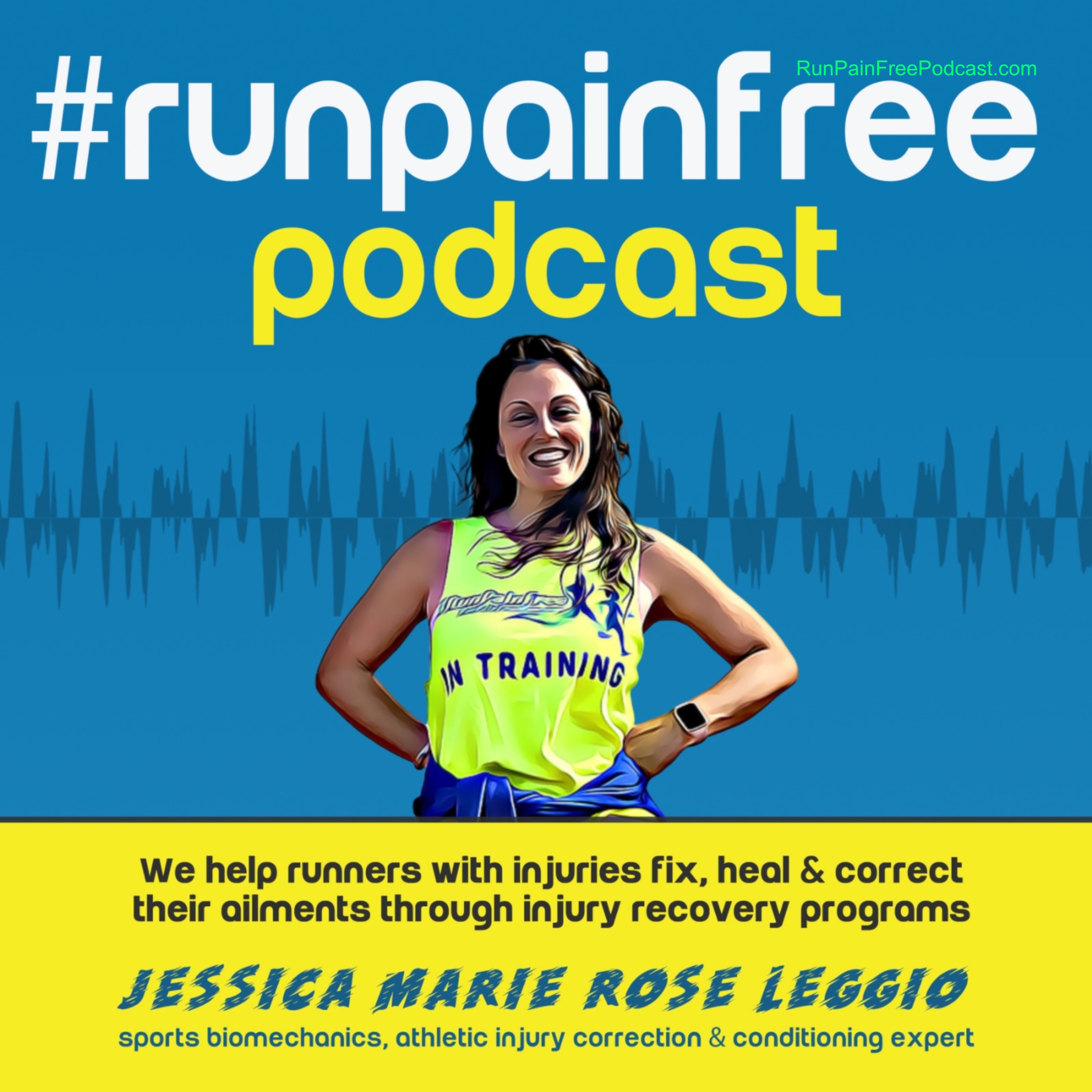🎧 The Expert Guide To Remove IT-Band Syndrome (ITBS) Once And For All!
Description
Welcome once again to the #RunPainFree podcast. Today, Coach Jessica Marie Rose Leggio gives you the low down on your IT Band. If you thought it was just at the side of your quads and you could stretch it out, listen up, rascal – you've got a lot to learn!
HERE'S WHERE YOUR IT BAND IS…
Your IT band starts just below your knee. Place your hand beneath the back of your knee and grab it. Where your thumb rests is a tiny bone that protrudes out. That, my friend, is where your IT band inserts in your tibia.
The IT Band goes from your knee up the outside of your quad and hamstring and then up to your hip before fanning out and covering 80% of each glute. It then crosses your lumbar, your T-spine, and attaches to your opposite shoulder. In sum, it covers the majority of your body.
Why your IT band is super important as a runner.
Your IT Band dictates your ability to move like a human being. As we keep hammering at #RunPainFree, running is an essential human function (aka walking) with velocity to the extreme.
The IT Band's job is to see if your body is moving in dysfunction. If you are moving in some freak-a-saurus sort of way, it's going to lock you up. That's its job, to lock you up and save you from yourself.
DO YOU EVEN FOAM ROLL?
Runner's in the know foam roll. Runners who think they are in the know only foam roll their legs. But let's set the record straight, them runners are damn fools; that isn't how fascia works!
Fascia is all over your body. It's what connects our bones, our joints, and our muscles together. It holds us together as human beings, hence the term connective tissue.
The IT band is also the densest section of fascia on your body. When you only foam roll a portion of fascia, the parts you ignored get worse. If you are foam rolling and not going right up to the joint, you are in for some problems.
Here's why: wherever the joint is, the fascia gets taught. Why, you may ask? Simply put, the fascia's job is to restrict your joint from moving improperly.
To get to the root cause of your injury, you have to foam-roll everything. When you do this, you'll know where your body is in pain, where it's not, where it's knotted, where it's smooth, where you didn't realize you had aches or pains. That's why foam rolling is the gateway to understanding your body.
When you have sticky-stuck joints, your fascia gets tauter to protect you from moving. Now that you've heard the explanation, are you surprised you are in pain? Are you surprised when we say you need to listen to your body and stop moving in that funky way! Where not saying fly James Brown funky, where saying fly-infested garbage funky!
If you push through the pain, take Advil, get braces, get shots, get all that business, you, my friend, have taken a one-way ticket to the hurt locker. The only person who can let you is you, but you've got to work it.
Sidebar: We have an episode on shortcomings of quick fixes to manage injury pain: How to overcome your fear of getting injured.
That pain was merely your body giving you feedback that you have a dysfunctional movement pattern and you need to address it. If you push through it, the hurt locker walls will only close in on your further and further.
But the good news is, it doesn't have to be this way. You can reset your dysfunctional movement pattern by releasing restrictions at that joint. You're probably thinking, OK, foam rolling, but what else? Good question, but that takes an expert to solve. Our catch-all advice via the podcast is simply foam roll everything.
But our hot tip with your IT band is to take your time foam rolling. In the beginning, it's going to hurt because you're loosening up the restriction on a fundamental mobility structure. Whenever you release your funky dysfunctional muscles, it's going to hurt. It's going to be sore. But just like a kidney stone, the pain will soon pass
More Episodes
Episode Summary:
In this episode, Coach Jessica dives deep into the often misunderstood and misdiagnosed condition known as runner's knee. She debunks common myths, explains why knee pain is rarely about the knee itself, and shares insights on addressing the root causes of the pain. This episode...
Published 06/14/24
Published 06/14/24
Discover the truth behind building bone density and why weightlifting alone isn't the answer. Join us as we delve into functional fitness and debunk common myths on the #RunPainFree Podcast.
🔹 In This Episode:
Debunking the misconception that weightlifting is the sole solution for bone...
Published 03/23/24


